If you happen to be at Piccadilly Circus at precisely 20:23 on any given evening throughout April, keep an eye on the famous curved billboard screen. It will turn black, before a series of smoky white drawings appears, depicting Noah’s ark, the sea, birds, roses, mushrooms and mountains, a woman’s face. These are pages from Laurie Anderson’s ‘notebook’ – or rather, chalk drawings that she made on a blackboard and then photographed. The installation has been created for CIRCA’s ongoing monthly programme, which this year asks artists, activists and thinkers to respond to the question: ‘How do we create hope?’
Anderson seems unusually well-equipped to take on this kind of existential dilemma. Over the course of her five-decade career, she has traversed just about every boundary there is in the creative world. In 1981, ‘O Superman’, an eight-minute track that she recorded in a makeshift studio in her hallway, comprising a mix of electro-poetry layered on top of a loop of her saying the word ‘Ha’, unbelievably shot to number two in the UK record charts. She helped to design the opening ceremony of the 2004 Olympic Games in Athens, served as the first – and, to date, only – official artist in residence for NASA, played a concert for dogs at the Sydney Opera House, published 10 books, contributed music to films by Wim Wenders and Jonathan Demme, and been nominated for five Grammies. But even so, she tells me that she finds the idea of creating hopefulness difficult. ‘You know when people say, “Do you think music can change the world, make it a better place”? My first question is always, better for whom? For you and your friends? Who are you talking about?’ she says. ‘Good luck with making people feel more hopeful or upbeat. It’s so hard to live now, you have to find your own way. Just be generous and let things roll.’
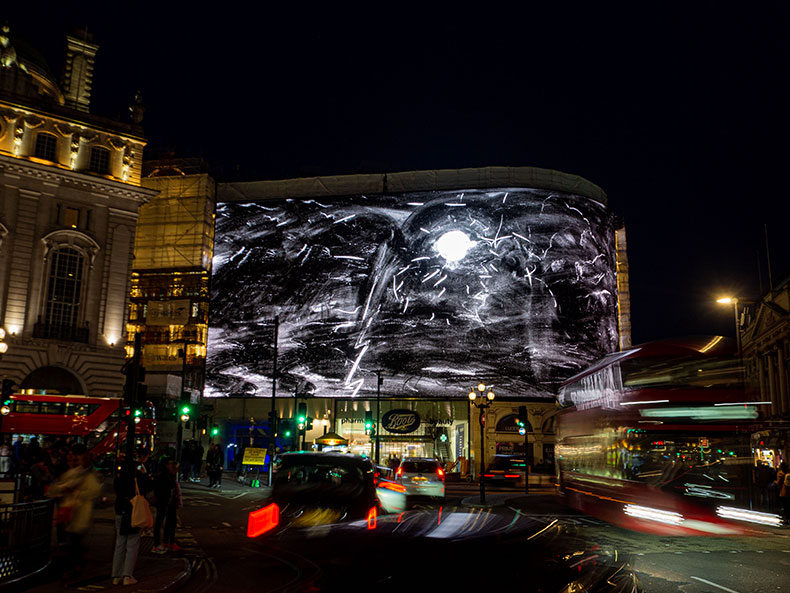
Still from Notebook (2023), Laurie Anderson, at Piccadilly Circus, London. Photo: © CIRCA
This is the approach that Anderson also takes to making art – she allows herself to be guided by her interests and carried off in swerving, unpredictable directions. When we speak, over Zoom, she is suffering from jetlag, having just returned to New York from Stockholm where she was installing a major show at Moderna Museet. ‘It was really hard – 16-hour days, working with lots of different teams of people and problem solving. Did you ever get to empty on your energy level? You have nothing left; that’s where I was. I had nothing left.’ Still, she has plenty to say; the conversation moves quickly from anecdotes to ideas and questions that range from the mundane to the immense. ‘Does your life follow a plot?’ she asks me at one stage. When I ask her where these latest chalk drawings came from, she looks through notes on her phone and reads some of them out to me, including observations on passing ships she can see from her window and one which reads: ‘Why don’t I have a spring party?’ Everything that she sees and experiences feeds into the things that she makes, as do the stories that she has been told. At the moment, she’s working on a book that’s ‘pretty dependent on those notes […] It’s sort of scattered, but I like a scattered quality of thing.’
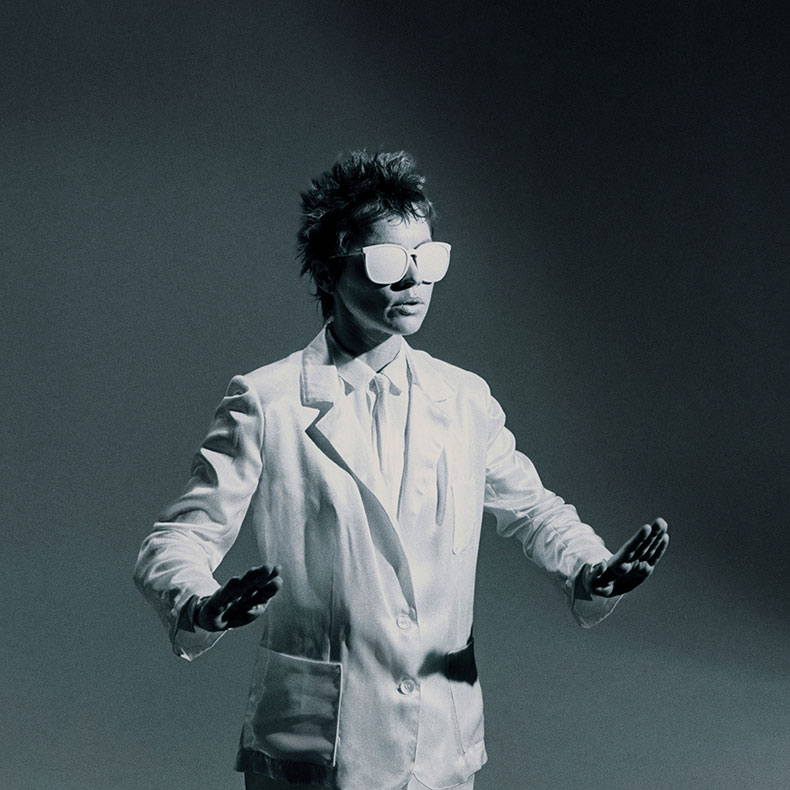
Laurie Anderson on the cover of her debut album Big Science (1982). Photo: Greg Shifrin; © Laurie Anderson
The purpose of Anderson’s work isn’t to be deliberately elusive but rather to make space for multiple voices and ways of working, looking and understanding. The starting point for a new work often comes from re-examining historical or personal narratives. The exhibition at the Moderna Museet, ‘Looking into a Mirror Sideways’ (until 3 September 2023), takes its name from a series of self-portraits from the 1970s in which Anderson holds a mirror sideways against her face so that it distorts her features. ‘It’s about trying to get in between your identity and trying to see how things look without putting yourself in the middle of the story or the picture,’ she says. The show is loosely inspired by Persona (1966), a film by Ingmar Bergman whom Anderson has long admired. It is dedicated to her paternal grandfather, Axel Efraim Anderson, who claimed that he came from Sweden to the United States when he was eight, started a horse business when he was nine and got married when he was 10. Anderson, who was born in 1947 to a large family just outside of Chicago, admits that much of the story sounds questionable – but that doesn’t mean she ever questioned it. ‘It became family lore,’ she says.

Absent in the Present: Looking into a Mirror Sideways 3 (1975) Laurie Anderson. © Laurie Anderson
Just before the pandemic, Anderson learned more about the true details of Axel’s early life. He arrived in the United States with his parents, brother and sister in the late 19th century. After his mother died, he was sent to live in an orphanage for a couple of years; when his father eventually regained custody, he had already remarried a woman that Axel hated. Axel made several attempts to run away from home and was eventually put into prison in Minnesota, seemingly at the behest of his father, for what Anderson describes as ‘incongruous behaviour’; he remained there until he was 21.
For the show in Stockholm, Anderson tried to make paintings based on the story of his life as Axel told it: ‘But they turned out really bad. I just did some A.I. stuff instead where you enter a bunch of words: Swedish boy, turn of the century, goat, fence, house, fir trees, snow shoes, daguerreotype. I ended up with around 20 of what looks like photographs of my grandfather’s life.’ These are on show alongside Habeas Corpus, a political performance work made in collaboration with Mohammed el Gharani, a former prisoner at Guantánamo Bay, as well as spatial installations of her most recent opera, Ark, which is set to premier in Manchester in 2024 and reimagines the biblical flood as the bursting of the iCloud, with all of humanity’s stored knowledge raining down over the earth.
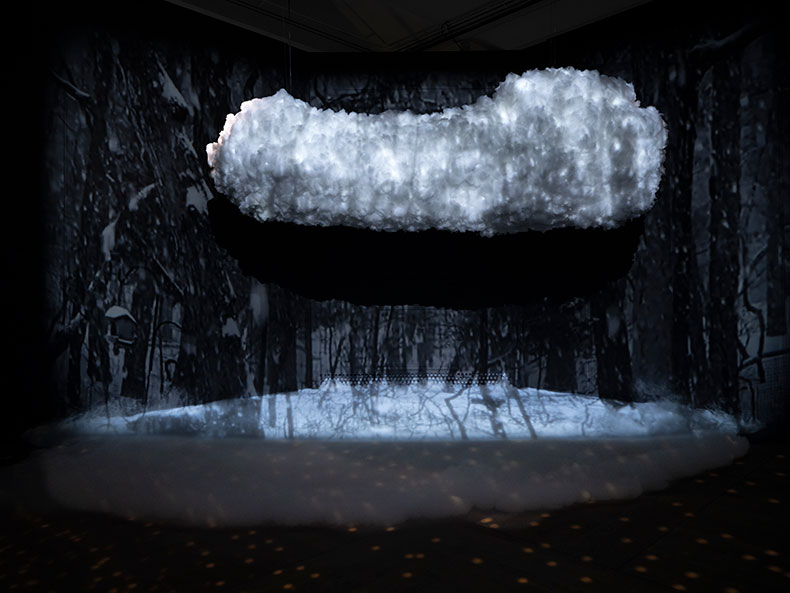
ARK – Cloud (2023), Laurie Anderson. Photo: Mattias Lindbäck/Moderna Museet
This blurring of fact and fiction, as well as of ancient and contemporary storytelling techniques, means that Anderson’s work seems to speak, simultaneously, of and from the past, present and future. ‘Growing up, there was a word I kept hearing in Bergman films, which I knew was important because every time it was spoken there was a pause before and after it, it felt bracketed,’ Anderson says. ‘The word was ingenting which means “nothing” – but not like Sartre, being and nothingness, it’s more about potential: things that haven’t happened yet and will happen now.’ Perhaps this is where, for Anderson, hope really lies – in rubbed-out images, fragmented sentences, the empty space and the pause.
‘Laurie Anderson: Notebook’, presented by CIRCA, is screening every night at 20:23 at Piccadilly Circus, London until 30 April. ‘Looking into a Mirror Sideways’ is at the Moderna Museet, Stockholm until 3 September.
Unlimited access from just $16 every 3 months
Subscribe to get unlimited and exclusive access to the top art stories, interviews and exhibition reviews.


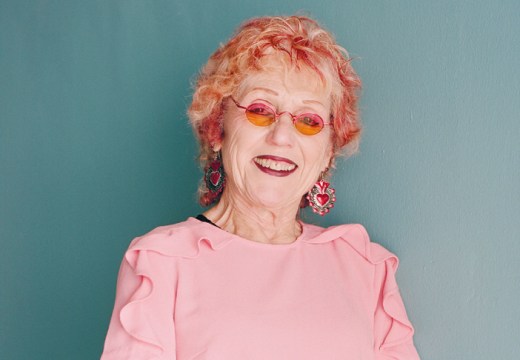
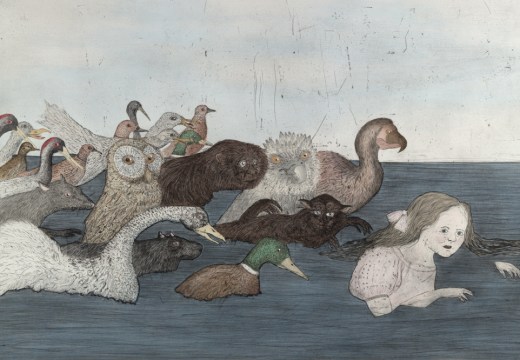
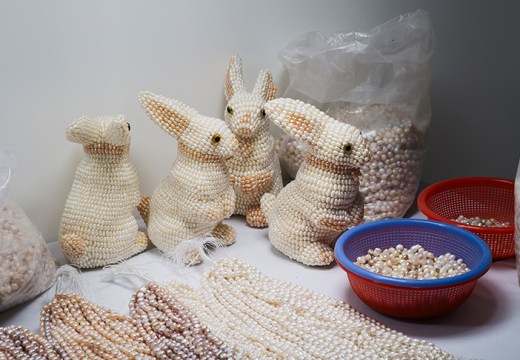









![Masterpiece [Re]discovery 2022. Photo: Ben Fisher Photography, courtesy of Masterpiece London](http://www.apollo-magazine.com/wp-content/uploads/2022/07/MPL2022_4263.jpg)
It’s time for the government of London to return to its rightful home